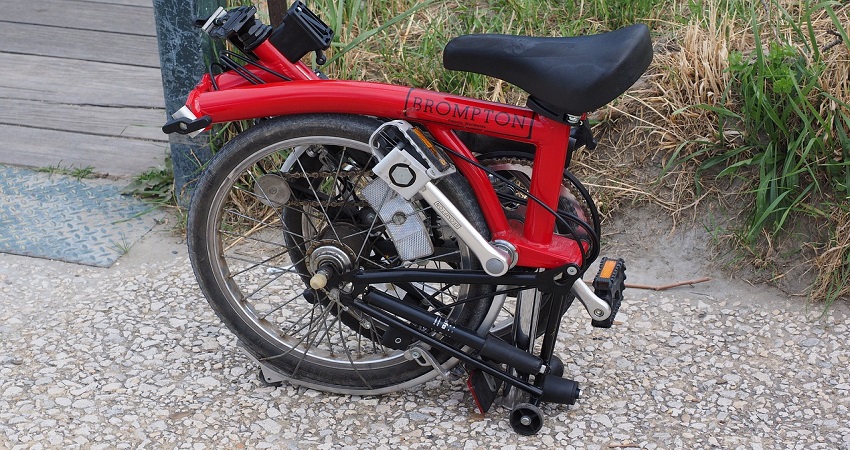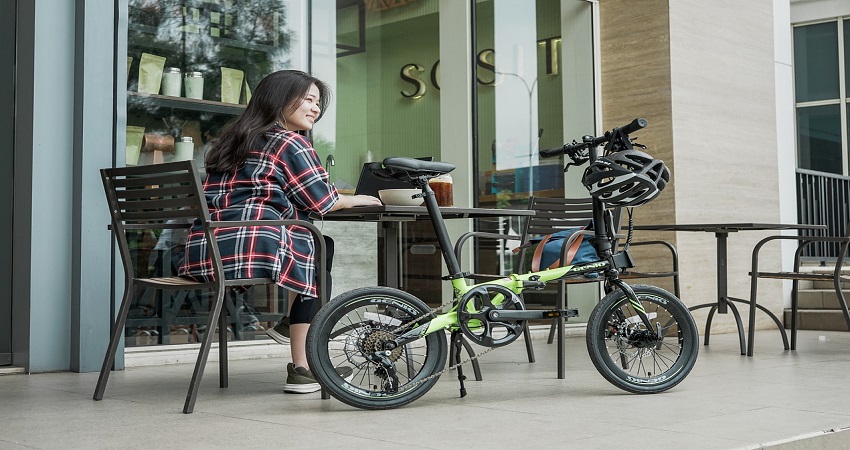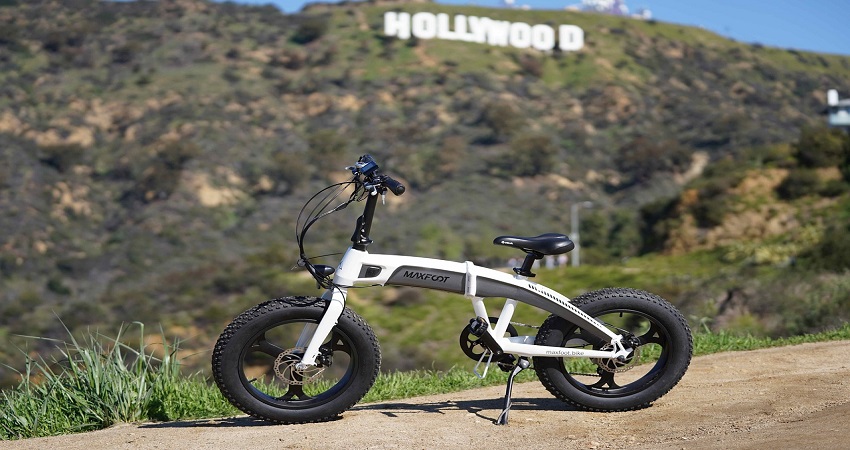
Do Folding Bikes Have A Weight Limit?

Folding bikes generally have weight limits, typically ranging from 220 to 300 pounds. These limits are set by manufacturers to ensure the integrity and safety of the bike’s design and components.
However, it’s important to note that weight limits can vary depending on the specific model and brand of the folding bike. People with a heavier body weight may need to consider purchasing a folding bike with a higher weight limit or explore alternative options.
By understanding and adhering to the weight limit, riders can enjoy the convenience and portability of a folding bike while ensuring a safe and comfortable riding experience.
Why Weight Limit Matters
For folding bike riders, safety is always a top concern. Understanding and adhering to the weight limit of your folding bike is crucial for ensuring a safe and enjoyable riding experience. Going over the weight limit can compromise the structural integrity of the bike, leading to potential accidents and injuries.
When a folding bike is designed, engineers take into account various factors, such as material strength and frame structure, to determine the weight limit. Exceeding this weight limit places extra stress on these components, increasing the risk of failure. This is especially true for critical parts such as the frame, fork, and handlebars.
Imagine riding a folding bike that is carrying more weight than it is designed to handle. The frame may become unstable or even break under the extra load, causing you to lose control and potentially crash. In addition, the folding mechanism itself may not function properly if the bike is overloaded, further compromising your safety.
To avoid these safety concerns, it is essential to adhere to the weight limit specified by the manufacturer. This ensures that the bike is operating within its intended parameters, optimizing safety and minimizing the risk of accidents.
While safety is a primary concern, exceeding the weight limit of a folding bike can also have a significant impact on its performance. The weight limit is not arbitrarily set; it is carefully calculated to provide the best riding experience for cyclists within specific parameters.
When a folding bike is overloaded, the additional weight can make it more challenging to pedal and control. The bike may feel sluggish and less responsive, affecting your ability to climb hills, accelerate efficiently, or maneuver through tight spaces. This can detract from the overall enjoyment of your ride.
Besides affecting your ability to navigate your folding bike smoothly, exceeding the weight limit can also strain the bike’s components. The added weight puts more pressure on the drivetrain, brakes, and wheels, which may lead to accelerated wear and tear. This can result in decreased performance, increased maintenance costs, and a shorter lifespan for your folding bike.
By adhering to the weight limit, you allow your folding bike to perform optimally and ensure that its components are not under excessive stress. This helps maintain the bike’s efficiency, longevity, and overall cycling experience.
Factors Influencing Weight Limit
When it comes to folding bikes, it’s important to consider their weight limit. The weight limit determines the maximum load the bike can handle, ensuring your safety and the bike’s durability. Several factors influence the weight limit of folding bikes, including frame construction, components, and wheel size.
Frame Construction
The frame construction plays a vital role in determining the weight limit of folding bikes. Most folding bikes have a lightweight frame material like aluminum or carbon fiber. These materials offer a balance between weight and strength. Aluminum frames are lightweight and sturdy, making them a popular choice for folding bike manufacturers. On the other hand, carbon fiber frames are even lighter but more expensive.
The frame design also affects the weight limit. Some folding bikes have a step-through frame design, which allows for easy mounting and dismounting. While step-through frames provide convenience, they may have a slightly lower weight limit compared to traditional diamond-shaped frames.
Components
High-quality components on folding bikes contribute to a higher weight limit. The components include the drivetrain, handlebars, seat post, and pedals. These parts should be durable and capable of supporting the weight of the rider. Investing in bikes with reliable components ensures a higher weight limit and overall reliability.
Wheel Size
The size of the wheels also influences the weight limit of folding bikes. Larger wheels tend to have a higher weight capacity, as they distribute the load more evenly. Folding bikes typically come with 16-inch, 20-inch, or 26-inch wheels. The larger the wheel size, the higher the weight limit. However, it’s important to note that larger wheels may affect the bike’s overall portability.
Before purchasing a folding bike, consider these factors that influence the weight limit. Ensure the frame construction, components, and wheel size meet your weight requirements for a safe and enjoyable riding experience.
Understanding Weight Limit Specifications
Folding bikes typically have weight limits, so it’s important to understand these specifications. Knowing the weight limit can help you choose a bike that can safely support your weight and avoid potential damage or accidents.
When it comes to folding bikes, it’s essential to understand the weight limit specifications. This information is crucial for ensuring safety and durability while riding your folding bike. By adhering to the weight limit, you can maximize the lifespan of your bike and prevent any accidents or damages.
Manufacturer’s Guidelines
Manufacturers provide weight limit guidelines to help users determine the maximum weight their folding bikes can support. These guidelines are typically based on the bike’s structural design and the materials used in its construction. It’s important to follow these recommendations and not exceed the specified weight limit, as doing so can put stress on the bike’s frame and components, significantly affecting its performance and longevity.
If you’re unsure about the weight limit of your folding bike, always consult the manufacturer’s documentation. This information is usually included in the user manual or available on the manufacturer’s website. Following the manufacturer’s guidelines will ensure that you don’t compromise your safety and the bike’s overall performance.
Testing Standards
Folding bikes undergo rigorous testing to determine their weight limit and overall durability. Manufacturers conduct various tests, such as static and dynamic load tests, to evaluate the bike’s ability to withstand different weights and riding conditions.
| Testing Standards | Description |
|---|---|
| Static Load Test | This test applies a stationary load on the bike for a specified period to assess its structural integrity under static conditions. |
| Dynamic Load Test | This test involves subjecting the bike to different loads while simulating various riding conditions, such as rough terrain or sudden impacts. |
By adhering to industry-standard testing procedures, manufacturers can ensure that their folding bikes perform reliably and safely within the recommended weight limits. Remember, exceeding these limits can lead to compromised safety and potentially damage to the bike.
Understanding the weight limit specifications, following the manufacturer’s guidelines, and being aware of the testing standards are all crucial factors in determining if a folding bike is suitable for your weight as a rider. By selecting a folding bike with an appropriate weight limit, you can enjoy your rides confidently and prolong the lifespan of your bike.
Exceeding The Weight Limit
Folding bikes do have weight limits, so it is important to be aware of them to avoid exceeding the limit and potentially damaging the bike. Understanding the weight limit will help ensure the longevity and performance of your folding bike.
Contrary to popular belief, folding bikes do have a weight limit. Exceeding this limit can have serious consequences for both the rider and the bike itself. Understanding the risks associated with exceeding the weight limit is essential for a safe and enjoyable riding experience.
Consequences
Exceeding the weight limit of a folding bike can lead to various negative outcomes.
Here are a few potential consequences:
- Increased risk of accidents: Folding bikes are designed to support a specific weight range. Going beyond this limit can affect the bike’s stability and maneuverability, making it more challenging to control. This can increase the risk of accidents and injuries for the rider.
- Frame and component failure: Folding bikes are built with lightweight materials to make them easy to carry. When the weight limit is exceeded, the added stress can cause the frame or components to fail, compromising the bike’s structural integrity. This can result in expensive repairs or even render the bike unusable.
Recommendations
To ensure a safe and enjoyable ride, it’s crucial to adhere to the weight limit specified by the manufacturer. Here are some recommendations:
- Know your bike’s weight limit: Familiarize yourself with the weight limit specified by the folding bike manufacturer. This information is usually provided in the user manual or on the manufacturer’s website.
- Weigh yourself and your belongings: Make sure you know your own weight and consider any additional items you’ll be carrying, such as bags or baskets. It’s essential to include these weights in your total to avoid exceeding the bike’s limit.
- Consider upgrading to a higher weight limit model: If you consistently find yourself close to the weight limit, it may be worth considering a folding bike with a higher weight capacity. This will provide peace of mind and ensure a more comfortable and stable ride.
- Regularly inspect your bike: Perform routine inspections to check for any signs of damage or stress on the frame and components. This will help identify potential issues before they escalate.
By adhering to the weight limit and following the recommendations above, you can ensure your safety, prolong the lifespan of your folding bike, and enjoy many hassle-free rides.
Choosing The Right Folding Bike
When it comes to choosing a folding bike, there are a few important factors to consider. One of these factors is the weight limit of the bike. While folding bikes are generally designed to be lightweight and portable, they do have weight limits that need to be taken into account. In this section, we will explore the considerations that need to be made when choosing a folding bike, ensuring you find the perfect match to suit your needs.
Consider Your Weight
Before purchasing a folding bike, it is crucial to consider your own weight. Different folding bikes are designed to accommodate different weight ranges. Therefore, it is important to ensure that the bike you choose can support your weight without compromising its performance or structural integrity. By considering your weight, you can narrow down your options and find a folding bike that suits you perfectly.
Check Weight Limit
When evaluating folding bikes, always check the weight limit specified by the manufacturer. This information can usually be found in the product specifications or user manual. The weight limit indicates the maximum load the bike can safely handle. It’s vital to choose a folding bike that can comfortably support your weight to ensure a smooth and enjoyable riding experience.
Quality Assessment
Aside from weight limits, focusing on the overall quality of the folding bike is equally important. A high-quality folding bike is generally built with robust materials, durable components, and precise engineering. This ensures the bike can withstand the weight and use without compromising its performance or safety. To assess the quality of a folding bike, look for reputable brands, read customer reviews, and consider factors such as frame material, folding mechanism, and overall build quality.
In conclusion, when choosing a folding bike, it is essential to consider your weight, check the weight limit specified by the manufacturer, and assess the overall quality of the bike. By taking these factors into account, you can make an informed decision and find the perfect folding bike that caters to your weight and offers a reliable and enjoyable cycling experience.
Frequently Asked Questions For Do Folding Bikes Have A Weight Limit?
What Is The Weight Limit For Folding Bikes?
The weight limit for folding bikes varies depending on the model and brand. It is typically between 220 and 300 pounds. It is important to check with the manufacturer’s specifications to ensure that you do not exceed the weight limit and compromise the safety and performance of the bike.
Can A Folding Bike Support Heavier Riders?
Yes, there are folding bikes available that can support heavier riders. It is recommended to look for models with higher weight limits and strong frame construction. Additionally, choosing a folding bike with larger wheels and wider tires can provide extra stability and support for heavier riders.
Are There Folding Bikes Specifically Designed For Heavier Individuals?
Yes, there are folding bikes specifically designed for heavier individuals. These bikes often have reinforced frames, wider tires, and stronger components to accommodate the additional weight. They are engineered to provide stability, comfort, and durability for riders who exceed the average weight limit of standard folding bikes.
Conclusion
To sum it up, while folding bikes offer convenience and versatility, it’s crucial to be mindful of their weight limits. Exceeding these limits can compromise your safety and the overall performance of the bike. By following the manufacturer’s guidelines and matching your weight to the recommended limit, you can enjoy the benefits of a folding bike for a long time to come.
Remember to choose a folding bike that suits your body type and ensure proper maintenance to ensure a smooth and enjoyable ride.




